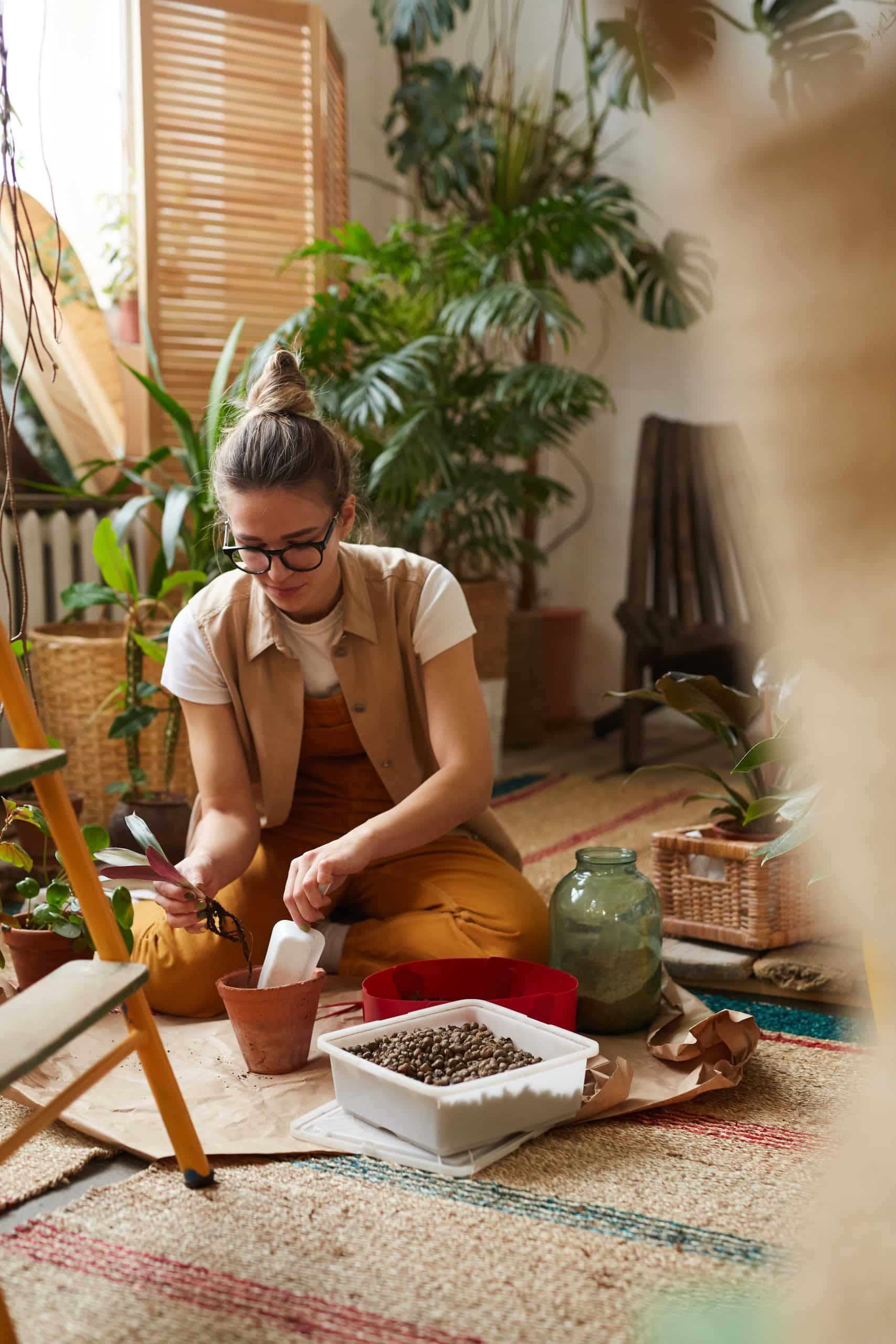As you gaze around your home, you may be surprised to learn that some of the most effective tools for purifying your indoor air are elegantly nestled in your living room corner or perched on your bedroom windowsill. Yes, we’re talking about plants! They not only add aesthetic appeal but also play a crucial role in creating a healthier living environment.
Plants have been proven to filter out common volatile organic compounds (VOCs) such as formaldehyde and benzene. They’re easy to care for, and they can readily adapt to indoor conditions, making them a popular choice among homeowners. Here, we’ll provide you with a comprehensive guide of the best air-purifying plants that you can easily grow at home.
A lire également : What’s the Best Way to Integrate Antique Pieces in a Modern Setting?
1. Spider Plant: A Hardy Air-Purifier
One of the most popular and easy-to-grow indoor plants, the Spider Plant, makes the top of the list. Its long, arching leaves are not only excellent at absorbing toxins, but they also release oxygen during photosynthesis, significantly improving your room’s air quality.
Spider plants are particularly good at removing formaldehyde, commonly found in household products. They’re low maintenance and thrive in indirect sunlight, making them perfect for those of you who may not have a green thumb. Just remember to water them once a week, and they’ll continue to purify your air while adding a touch of nature to your home.
En parallèle : How to Choose Ergonomic Furniture for a Small Home Office?
2. Peace Lily: More Than Just a Pretty Face
Peace Lilies are well-known for their attractive white blooms and dark green leaves, but did you know they’re also efficient air purifiers? These indoor plants can filter out harmful toxins like benzene, formaldehyde, and carbon monoxide.
They are relatively easy to care for and don’t require much light, making them ideal for spaces with less natural light. Their high transpiration rate also adds humidity to the air, which can be beneficial in dry climates or heated indoor environments. However, it’s worth noting that Peace Lilies are mildly toxic to pets, so ensure they’re kept out of reach if you have furry friends at home.
3. Snake Plant: A Durable Air-Cleaning Machine
Don’t let the name scare you away. Snake plants, also known as mother-in-law’s tongue, are a top pick for an indoor plant that purifies air. They’re incredibly durable and can withstand less than ideal conditions, such as low light levels and irregular watering.
Snake plants are particularly adept at filtering out formaldehyde, which is common in cleaning products, toilet paper, and personal care products. Moreover, unlike most plants, they release oxygen at night, making them an excellent choice for bedrooms. Their upright growth pattern and striking green-yellow leaves also add a modern touch to your home décor.
4. English Ivy: A Classic Air Purifier
English Ivy, with its trailing vines and heart-shaped leaves, is not just a classic beautifier but also an impressive air purifier. It excels at absorbing formaldehyde, and due to its quick growth rate, it can cover large areas, thereby purifying more air.
It’s versatile and can be grown in various settings – hanging in a basket, climbing on a trellis, or simply cascading down a shelf. It prefers indirect light and needs to be watered only when the soil feels dry to the touch. However, it is toxic if ingested, so be sure to keep it out of reach of pets and children.
5. Boston Fern: A Humidity-Loving Air Purifier
Boston Ferns are a beautiful addition to any room with their lush fronds and intricate leaves. They are also high on the list of air-purifying plants, known to remove toxins like formaldehyde and xylene.
However, they do require a bit more care compared to other plants mentioned here. They prefer a cool environment with high humidity and indirect light. You should keep the soil moist, but not soggy, and mist the leaves regularly to mimic their natural tropical habitat. With a little extra care, this plant will reward you with improved air quality and a striking visual display.
Breathing clean, fresh air is integral to our well-being. By incorporating these air-purifying plants into your home décor, you’re investing in a healthier living environment. So go ahead, let nature lend a helping leaf, and start filling your indoor spaces with these green, air-cleaning machines.
6. Aloe Vera: A Succulent Air Purifier
Let’s add another gem to our list of purifying plants: Aloe Vera. This succulent plant is more than just a sunburn remedy. It’s also highly efficient at filtering out air pollutants like formaldehyde and benzene, often found in chemical-based cleaners and paints.
Aloe Vera is a low-maintenance plant, which thrives in sunny conditions. Place it near a window where it can soak up plenty of sunlight. It requires minimal watering, making it perfect for those with a busy lifestyle. The plant’s spiky, green foliage can add an interesting texture to your home office or living room decor.
But that’s not all. Aloe Vera also has a unique ability to indicate air quality. If the harmful chemicals in the air become excessive, the plant’s leaves will develop brown spots. So, it’s like having your very own, natural air quality monitor at home.
Please note: While Aloe Vera gel is beneficial for skin, the plant itself can be harmful if ingested by children or pets. Therefore, it’s advisable to keep it in a place out of their reach.
7. Rubber Plant: A Tall and Statuesque Air Purifier
Rubber plants, with their glossy, leathery leaves and impressive height, can make quite a statement in your home decor. Beyond their aesthetic value, they are also potent air purifiers, particularly good at removing formaldehyde from the air.
Native to Southeast Asia, rubber plants have the ability to grow up to 50 feet in their natural habitat. However, as an indoor plant, you can control their growth by selecting an appropriate-sized pot. Rubber plants love bright, indirect light, but they can also tolerate lower light conditions.
They’re easy to care for, requiring watering only when the top inch of the soil is dry. This makes them a great choice for individuals new to the world of indoor plants. Besides, their ability to resist pests makes them even more appealing as a houseplant.
A word of caution: the milky sap of rubber plants can cause skin irritation and can be toxic if ingrown, so keep it out of reach of pets and children.
Conclusion: Embrace the Green Therapy
The benefits of indoor plants go far beyond their aesthetic appeal. As our guide has shown, they also play a role in purifying the air in our homes and creating a healthier living environment. From the hardy Spider Plant to the tall and impressive Rubber Plant, there’s a plant for every home and lifestyle.
Incorporating these plants into your living space is not just about home improvement; it’s also about self-improvement. Breathing clean air can enhance your concentration, reduce stress, and improve your overall well-being. So, whether it’s for your bedroom, living room, or home office, invite these green friends into your home.
It’s time to say goodbye to synthetic air fresheners and hello to natural air purifiers. After all, what could be more gratifying than to watch your plants grow and flourish as they work tirelessly to provide you with fresh, clean air? So, go ahead, embrace the green therapy, and let your home resonate with the calming energy of nature.






